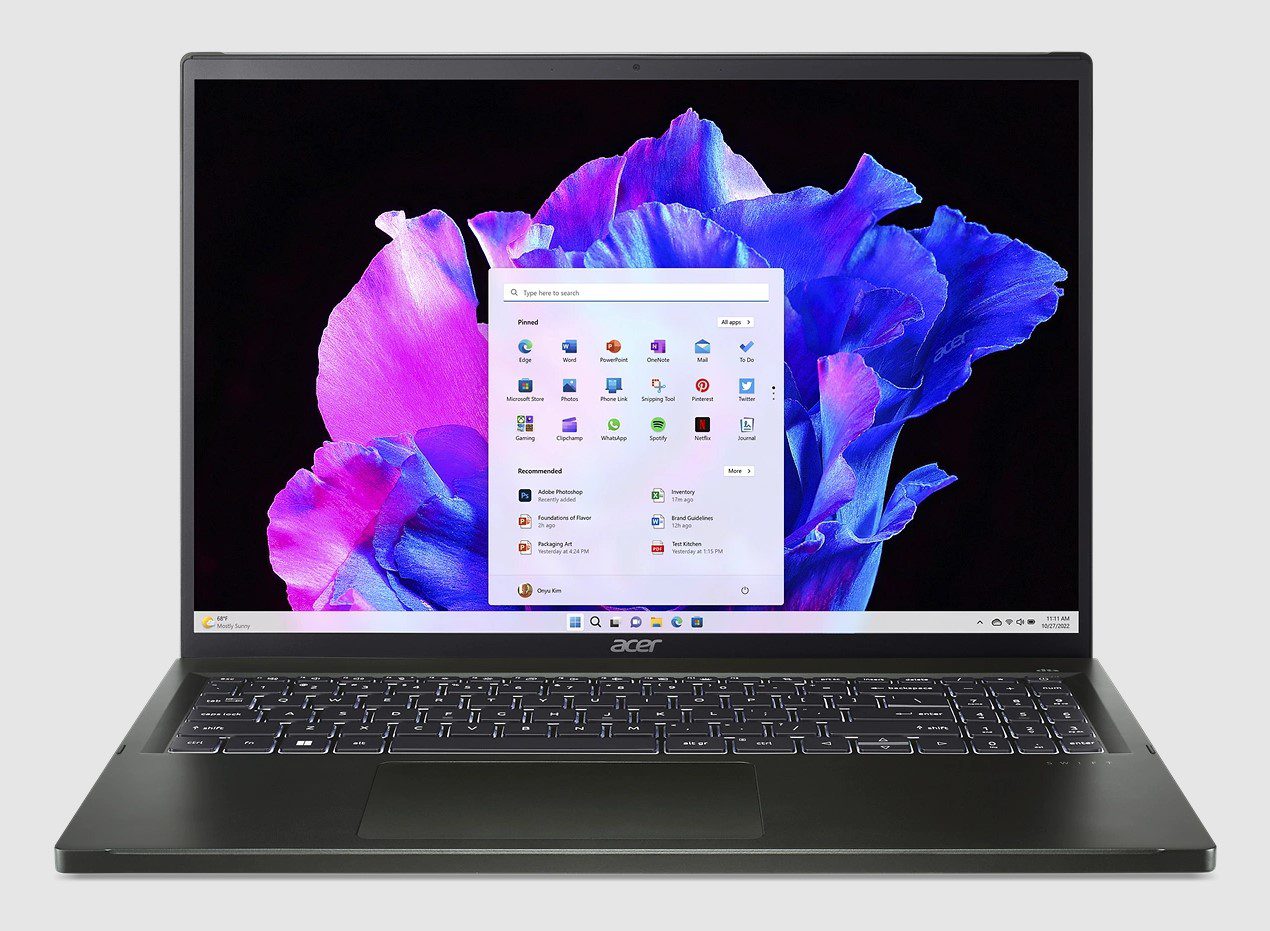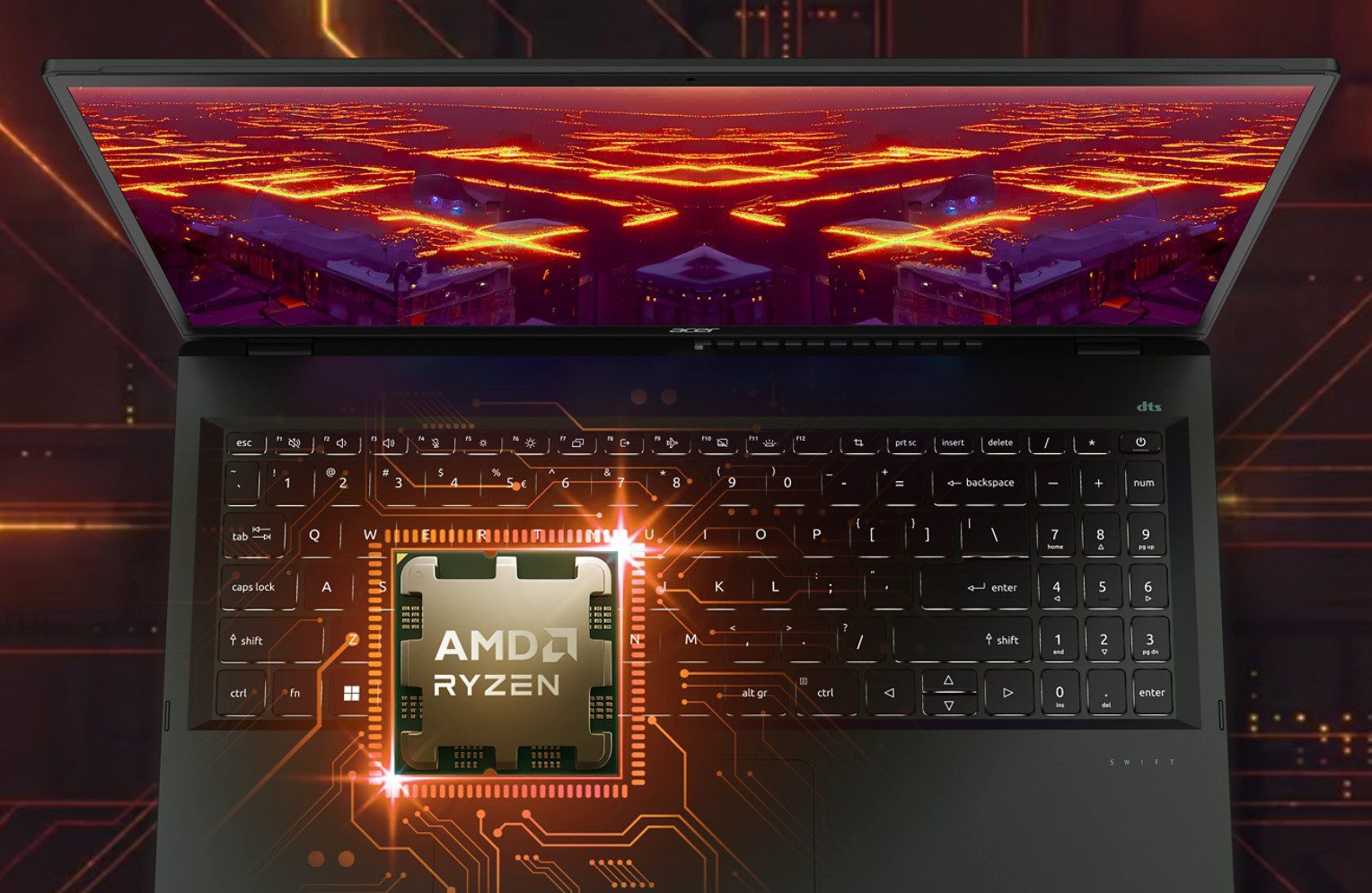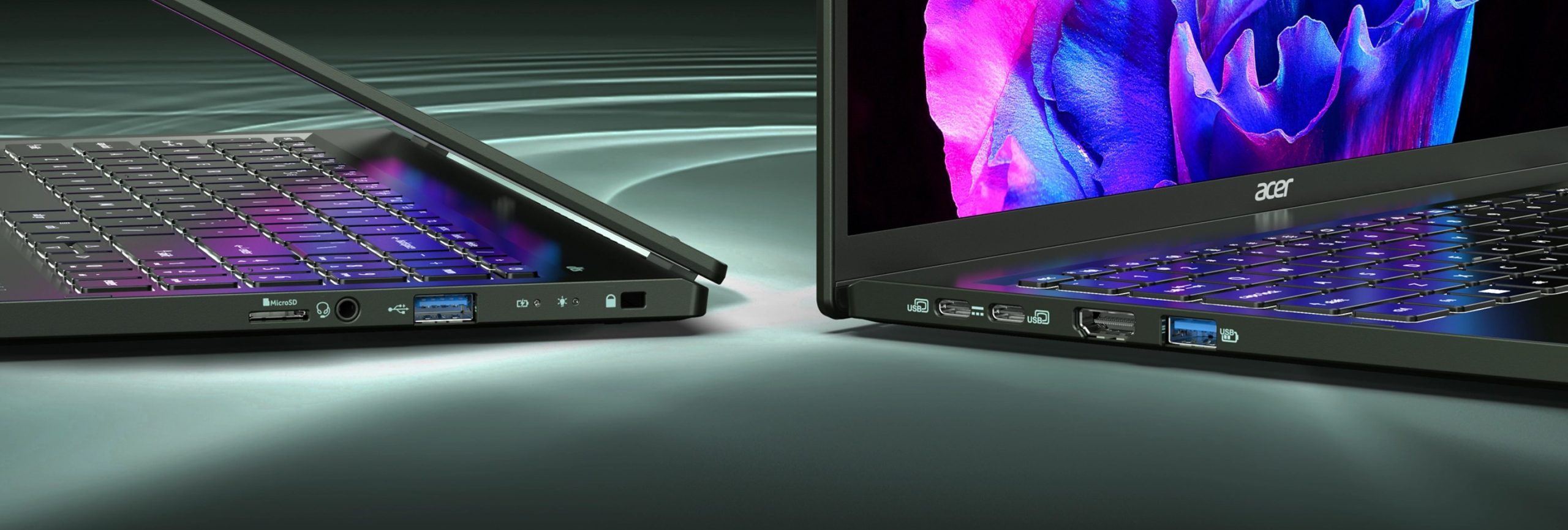Review of the Acer Swift Edge 16: Almost a showcase for AMD
- October 24, 2023
- 0
The Acer Swift Edge 16 is the lightest 16-inch notebook we’ve tested to date. The device also looks good and has an AMD processor for good performance. However,
The Acer Swift Edge 16 is the lightest 16-inch notebook we’ve tested to date. The device also looks good and has an AMD processor for good performance. However,


The Acer Swift Edge 16 is the lightest 16-inch notebook we’ve tested to date. The device also looks good and has an AMD processor for good performance. However, there are some serious caveats.
The Acer Swift Edge 16 (1,026 euros excl. VAT) looks good. Acer’s 16-incher has an impressive 16:10 display with thin bezels, so the size of the laptop remains relatively modest. In addition, the manufacturer relies on a thin housing and a very low weight: 1.25 kg. All these factors ensure that we have a 16-inch laptop without the classic disadvantages of this form factor.
The advantages are obvious. Inside there is space for a number pad next to the keyboard and the touchpad on the bottom is sufficiently large. Unfortunately, when we get started we immediately notice that Acer has made compromises. The keyboard doesn’t have as much feedback or depth and typing is significantly less comfortable than, for example, on a ThinkBook from Lenovo or a ProBook from HP. The touchpad also feels loose.

We actually miss a robust feeling in the entire case. When you hold the laptop firmly in your hands, you notice an almost suspicious flexibility. Don’t be completely put off now. The keyboard and touchpad do their job and it’s not like the notebook feels really cheap. Plus the whole thing looks nice. Acer refines the black interior with a subtle green shimmer that makes the laptop unique without compromising the professional appearance of the Acer Swift Edge 16.
Acer opts for a powerful AMD Ryzen 7 7840U. This is a processor with a TDP of 28 watts, which AMD equips with eight computing cores. The CPU developer does not use P and E cores or other large, small derivatives and therefore offers eight powerful cores with multithreading and an advertised clock speed of 3.3 GHz in base and 5.1 GHz in turbo mode.

Acer pairs this CPU with a modest 16GB of RAM and internal graphics sourced from the AMD Radeon 780M chiplet on the processor. For this test, we compare the performance of the AMD chip with that of Intel chips in three laptops. The Samsung Galaxy Book 3 Ultra and MSI Summit E16 Flip Evo have a similar profile and size. The Samsung has an Intel Core i7-13700H on board, which is accompanied by an Nvidia GeForce RTX 4050. The MSI notebook has an Intel Core i7-1370P and integrated graphics. The Lenovo Yoga Book 9i is a 13.3-inch device with an Intel Core i7-1355U on board. All three laptops come with the same amount of storage.
We’ll focus on the processor first. What is striking is that AMD’s CPU is the most powerful when you look at the performance per core, although the difference to the P-cores of the Intel chips is not immense. The three laptops can run these benchmark workloads at full performance in a single thread without too much thermal limitation, which explains the similar score.

If we look at the performance of the entire processor, the story changes somewhat. During high loads, the CPU cannot deliver its full performance in the cramped housing. The clock speed does not exceed 3.4 GHz and steadily drops to 3 GHz before finally stabilizing at 5 GHz.
The Intel CPU in the Galaxy Book 3 Ultra is a powerhouse that can also use eight E-cores in addition to six P-cores. When all of these cores pull the same line, they outperform the Acer Swift Edge 16. Thermal limitations also play a role, but the Intel CPU can still operate at a slightly higher clock speed.
The MSI also performs slightly better, although the CPU is not a heavyweight. The Intel Core i7-1360P only has four P-cores, which are supported by eight E-cores. All in all, these efficiency cores are not a problem. It’s not surprising that Intel’s U processor in the more compact chassis of the Lenovo Yoga Book 9i doesn’t match the other chips.

We see these results in various benchmarks. The AMD Ryzen processor is the champion in performance per core, but the powerful Intel chips can simply provide more total threads to handle workloads.
AMD’s integrated graphics remain superior to Intel’s. The Xe components in the MSI Summit and the smaller Yoga Book 9i don’t come close to the graphics performance of AMD’s laptop chip. The Acer is the absolute graphics champion among laptops without a separate graphics card. The Galaxy Book 3 Ultra does have an additional GPU on board: the Nvidia GeForce RTX 4050. This is an entry-level model in Nvidia’s RTX 4000 series, but it is enough to make a breakthrough with the integrated graphics.

So what does the overall performance look like? We look at office work in its broadest definition, where large and small spreadsheets alternate with emails, surfing with many tabs open, video meetings and light photo and video editing.
In an initial test, we are not yet dealing with too many more advanced workloads. The decisive factor here is the performance of the CPU, so that the Acer Swift Edge 16 is slightly inferior to the other laptops in comparison. The more comprehensive test focuses more on workloads that benefit from the GPU, and this is where the Acer notebook really comes into its own. Only the device with an additional discrete GPU performs better.

From this we have to conclude that Acer has put balanced hardware into its device with the AMD Ryzen 7 7840U. For the more demanding office worker, these specs are ideal and tailored for the occasional foray into photo and video editing.
The balance is shaken when we look at battery life. The Acer Swift Edge 16 actually performs quite poorly. Compared to the other devices, this notebook is a loser. However, the blame for this clearly lies with Acer and not with AMD. After all, the notebook has to make do with a 54 Wh battery, while Samsung equips its device with 76 Wh and MSI even equips it with 82 Wh. With such a small battery, it seems to be thanks to the Ryzen processor that the notebook lasts so long.

Of course, a small battery also has advantages: it fills up quickly. You can fill the tank half full again in less than half an hour; for an 80 percent charge you have to wait an hour. Charging is necessary on the go: half a working day on one charge becomes a challenge.

It’s not for nothing that Acer relies on a baby battery. Despite its 16 inches, this device only weighs 1.25 kg. That’s less than many 13-inch and 14-inch laptops. The Acer Swift Edge 16 is one of the most mobile 16-inch notebooks we’ve tested so far, if your mobility is limited. Battery life and weight are always a tradeoff and we like the lightness of this device, but from a practical perspective we still wonder if the pendulum swings a little too much to one side.
The screen makes an immediate impression as soon as we open it. Acer equips the Swift Edge 16 with a 16:10 OLED panel with a resolution of 3,200 x 2,000 pixels. The deep black, bright colors and high resolution ensure a very pleasant working experience. The maximum brightness is 374 cd/m², which is quite good. Even in brighter environments, you can work undisturbed without having to sit in the sun.
The color gamut of the screen is also very good, although the adjustment could be a little better. We see deviations from DeltaE 9.6 in the red tones, but there are outliers throughout the entire spectrum. On average, color fastness is not spectacular (DeltaE 5.3). This is particularly difficult for graphics professionals who want the red and blue of an image to be the same red or blue on the Acer Swift Edge 16 as it would be on another monitor. If that’s less important, you won’t stumble over it.
What we see on this screen doesn’t always make us happy. Acer has once again teamed up with bloatware maker McAfee, which has made its notifications to sell you one security suite or another more intrusive than ever. Other junk apps are also far too visible. Acer is partially using this laptop as a mobile billboard and that is unjustifiable.
Our test device runs Windows 11 Home, which suggests that Acer doesn’t necessarily see professionals as its main target group. The bloatware confirms this truth. When it comes to performance and size, we think the Acer Swift Edge 16 is a winner and the design is also quite simple. We’re a little concerned about durability during prolonged intensive work based on how the keyboard and surrounding chassis feel. The limited battery also spoils the party fun.
Acer primarily shows the performance of the AMD CPU here. In workloads combining Ryzen and Radeon, AMD outperforms Intel equivalents. This allows you to still pack quite a bit of graphics power into a compact chassis without the need for a separate GPU. The CPU itself is also powerful, but the chip cannot keep up with the additional cores from Intel in comparable laptops.

In our opinion, this is a top device for the occasional user, but we still have doubts about whether we can recommend the Swift Edge 16 in a business context. A slightly better keyboard and touchpad, as well as a lot less bloatware, would go a long way. It’s a shame that Acer is opting for a quick win here, because we’re fans of the concept of a powerful and lightweight 16-inch laptop. The device is available for 1,026 euros excluding VAT, but is equipped with Windows 11 Pro.
Tested configuration: Acer Swift Edge 16 N23Q21 – AMD Ryzen 7 7840U, AMD Radeon 780M (integrated), 16 GB DDR5 RAM, 512 GB SSD, 16 inch OLED screen (3,200 x 2,000 pixels), Windows 11 Home – 2 year standard warranty.
Source: IT Daily
As an experienced journalist and author, Mary has been reporting on the latest news and trends for over 5 years. With a passion for uncovering the stories behind the headlines, Mary has earned a reputation as a trusted voice in the world of journalism. Her writing style is insightful, engaging and thought-provoking, as she takes a deep dive into the most pressing issues of our time.